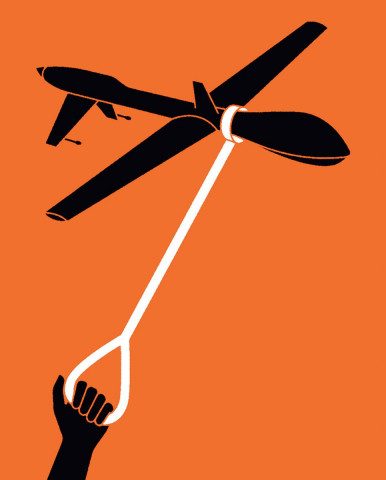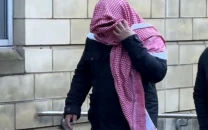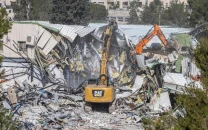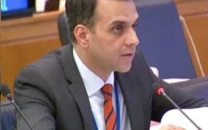Transparency in the drone wars
The Pentagon and the CIA have launched hundreds of strikes in Pakistan, Somalia, Yemen and Libya

PHOTO: MATT CHASE
Nangarhar bombing: Da’ish commander killed in US drone strike
Lisa Monaco, the assistant to the president for homeland security and counterterrorism, said in a speech this month that greater transparency “is the right thing to do” and is essential in order to “maintain the legitimacy of our counterterrorism actions.” That is a reasonable goal, but the administration has had more than seven years to forthrightly explain to the American people the scope and legal underpinnings of its drone program and other lethal counterterrorism operations outside war zones in Afghanistan, Iraq and Syria.
Since the Sept. 11 attacks, the Pentagon and the Central Intelligence Agency have launched hundreds of strikes in Pakistan, Somalia, Yemen and Libya. These have resulted in hundreds of civilian casualties, according to the Bureau of Investigative Journalism, which has compiled the most comprehensive data on secret American counterterrorism operations.
Imran Khan calls for compensation to drone victims
One of the goals of the administration is to show that it has killed fewer civilians in drone strikes since the White House instituted more stringent rules of engagement in 2013. But officials are not expected to release a detailed breakdown of casualties by strike or geographic area, which would reveal where the gravest errors have been committed. Nor is the White House expected to release the unredacted document outlining rules for lethal missions outside declared war zones that Mr Obama described in general terms in a speech in May 2013. That document, which should be made public, could reveal details about how the government picks targets, defines combatants and seeks to avoid killing innocent bystanders.
Further, the government should release, or at least provide more information about, earlier legal memos that are believed to outline its understanding of the scope and limits of its authority to kill people abroad.
Do we not bleed? Drone strike victim wants US to fund education not war
The administration should also stop treating the drone operations carried out by the CIA as presumptively classified, and therefore secret. They were hardly a secret to begin with, and there is no reason to keep the agency’s program shielded from public scrutiny.
Even though the coming report will be late and, in all likelihood, not hugely revelatory, the White House hopes to encourage future administrations to release information about counterterrorism operations. One option is an executive order establishing a reporting requirement; another is to require such reports by legislation, though previous proposals in Congress for reports on counterterrorism programs have gone nowhere.
It’s important that something be done. Other nations are building fleets of drones, and America has set a dangerous precedent. It has signaled that it’s permissible to kill people from the sky without publicly disclosing the justification or any collateral damage that might result.
This article originally appeared on the New York Times, a partner of The Express Tribune.



















COMMENTS
Comments are moderated and generally will be posted if they are on-topic and not abusive.
For more information, please see our Comments FAQ